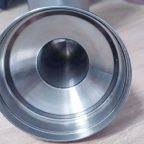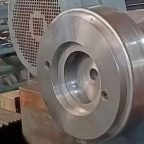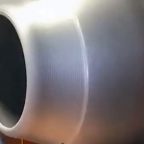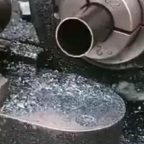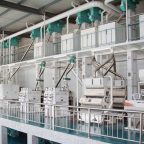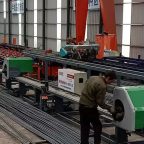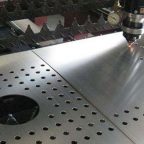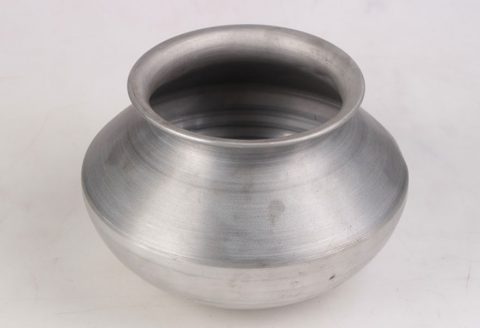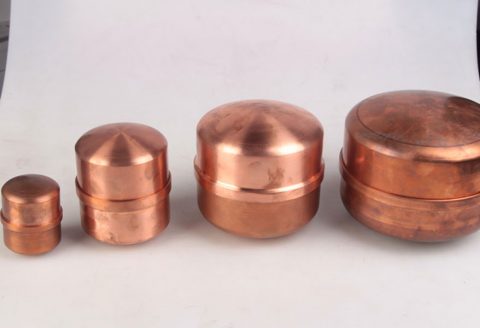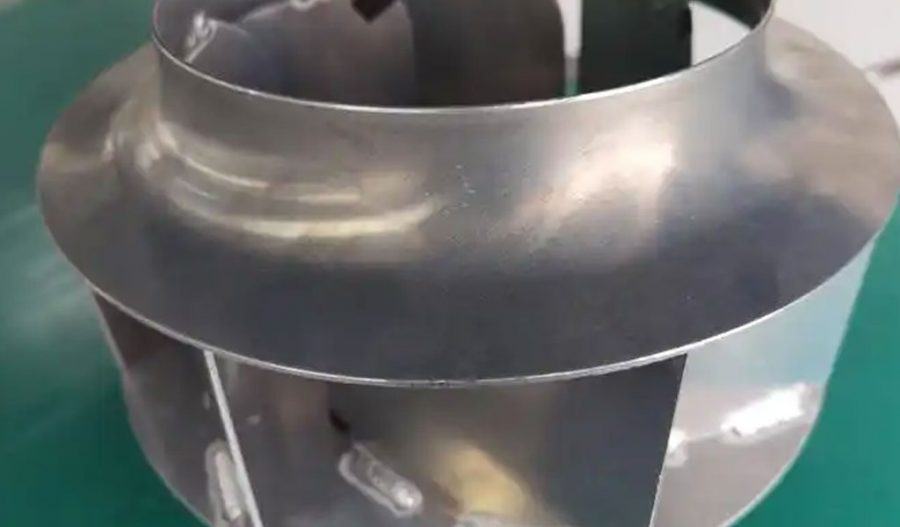
Large basin CNC metal spinning is a sophisticated manufacturing process used to create large, axisymmetric, seamless metal components, typically with diameters exceeding 1 meter (39 inches) and often used in industries such as aerospace, energy, chemical processing, and industrial manufacturing. This process involves rotating a flat metal disc or preformed blank at high speeds on a computer numerically controlled (CNC) spinning lathe while applying localized pressure with a roller tool to shape the metal over a mandrel or chuck into a desired form, such as a deep basin, hemispherical dome, or cylindrical vessel. The term “large basin” refers to the substantial size and volume of the components produced, which are often used as tanks, pressure vessels, or structural parts requiring high strength, durability, and precision.
CNC metal spinning, as a subset of the broader metal spinning discipline, leverages advanced automation and programmable controls to enhance repeatability, precision, and efficiency compared to traditional manual spinning. The integration of CNC technology allows for complex geometries, tighter tolerances, and high-volume production, making it ideal for large-scale industrial applications. This article provides a comprehensive exploration of large basin CNC metal spinning, covering its historical evolution, technical principles, process parameters, material considerations, equipment, applications, advantages, limitations, and recent advancements, supported by detailed comparison tables to elucidate key aspects.
Historical Context and Evolution
Origins of Metal Spinning
Metal spinning, also known as spin forming or metal turning, is one of the oldest metalworking techniques, with roots tracing back to ancient civilizations. Archaeological evidence suggests that early forms of spinning were used in ancient Egypt around 3000 BCE, initially for shaping clay pottery on hand-driven wheels. By 25 BCE, the technique was adapted for metalworking, as evidenced by the production of circular iron shields. These early methods relied on manual tools and skilled artisans who applied pressure to shape rotating metal blanks, a process requiring significant expertise and physical effort.
Throughout the Middle Ages, metal spinning was refined in Europe and Asia, particularly for crafting decorative and functional items such as bowls, chalices, and armor. The process remained labor-intensive, with artisans using hand-held tools to manipulate soft metals like copper, brass, and pewter. The Industrial Revolution in the 18th and 19th centuries marked a turning point, as mechanized lathes and improved metallurgy enabled the spinning of harder materials and larger components.
Introduction of CNC Technology
The advent of computer numerical control (CNC) in the mid-20th century revolutionized metal spinning. Initially developed for machining processes, CNC technology was adapted for spinning in the 1970s, introducing automation and programmable controls. Early CNC spinning machines used template copying and basic numerical control systems, which automated the physical actions of manual spinning but still required skilled operators to program toolpaths. By the 1980s, programmable numerical control (PNC) systems emerged, allowing operators to record manual spinning movements and replay them for consistent production, reducing the reliance on highly skilled labor.
The integration of advanced CNC systems in the 1990s and 2000s further enhanced the precision and flexibility of metal spinning. Modern CNC spinning lathes are equipped with sophisticated software, multi-axis control, and real-time monitoring, enabling the production of complex geometries with tolerances as tight as 0.001 inches (0.025 mm). For large basin applications, these advancements facilitated the production of components with diameters up to 120 inches (3 meters) and thicknesses exceeding 0.75 inches (19 mm), meeting the stringent requirements of industries like aerospace and energy.
Technical Principles of Large Basin CNC Metal Spinning
Basic Mechanism
Large basin CNC metal spinning involves rotating a metal blank—typically a flat disc or a preformed tube—at high speeds on a CNC spinning lathe. The blank is clamped against a mandrel or chuck, which defines the final shape of the component. A roller tool, controlled by the CNC system, applies localized pressure to the rotating blank, gradually deforming it into the desired form through a series of passes. The process is considered a “cold” forming technique, as it relies on plastic deformation without heating the metal, though friction between the roller and blank generates localized heat.
The CNC system uses G-code, a numerical control programming language, to dictate the roller’s toolpath, speed, and pressure. The lathe’s spindle rotates the blank at speeds ranging from 100 to 1000 RPM, depending on the material and component size, while the roller moves along programmed axial and radial paths. The combination of rotational motion and applied force creates a tangential flow in the material, resulting in a seamless, axisymmetric shape with refined grain structure and enhanced mechanical properties.
Multi-Pass vs. Shear Forming
Two primary techniques are used in large basin CNC metal spinning: multi-pass spinning and shear forming. Multi-pass spinning involves multiple roller passes to gradually shape the blank, allowing for precise control over wall thickness and geometry. The roller moves forward to thin the material and backward to displace metal, ensuring consistent thickness and minimizing springback. This method is ideal for complex shapes and materials prone to work hardening.
Shear forming, in contrast, completes the forming process in a single pass, with the roller applying significant pressure to deliberately reduce wall thickness. The flange of the blank remains vertical during shear forming, resulting in pronounced cold working and enhanced material strength. Shear forming is preferred for applications requiring lightweight components, such as aerospace parts, but is less flexible for complex geometries.
Key Process Parameters
The success of large basin CNC metal spinning depends on several critical parameters, each influencing the quality, accuracy, and efficiency of the final component. These include:
- Mandrel Speed (n): The rotational speed of the lathe spindle, typically measured in revolutions per minute (RPM). Higher speeds reduce forming time but may increase heat and vibration, affecting surface finish. Optimal speeds for large basins range from 200 to 500 RPM for aluminum and 100 to 300 RPM for stainless steel.
- Tool Feed Rate (f): The speed at which the roller advances along the blank, measured in millimeters per revolution (mm/rev) or inches per revolution (in/rev). Feed rates of 0.5 to 2 mm/rev are common, balancing forming speed and surface quality.
- Tool Path Profile (TPP): The programmed trajectory of the roller, which determines the shape and thickness distribution. Linear, sinusoidal, or custom profiles are used, with sinusoidal paths reducing stress concentrations.
- Spinning Wheel Fillet Radius: The radius of the roller’s contact surface, affecting the contact area and forming force. Larger radii (e.g., 6 mm) reduce localized stress but may compromise precision.
- Spinning Wheel Angle of Attack: The angle at which the roller contacts the blank, influencing forming force and material flow. Angles of 30° to 45° are typical for large basins.
- Material Properties: The blank’s composition, thickness, and mechanical properties (e.g., yield strength, ductility) dictate formability and tooling requirements.
- Friction and Lubrication: The friction coefficient between the roller and blank affects forming force and surface quality. Lubricants reduce friction (typical coefficient: 0.1) and prevent galling.
These parameters are optimized through experimental design and simulation, often using tools like MSC Simufact.Forming to predict stress distribution, strain paths, and wall thickness variations.
Materials Used in Large Basin CNC Metal Spinning
Large basin CNC metal spinning is compatible with a wide range of metals, each selected based on the application’s requirements for strength, corrosion resistance, weight, and cost. Common materials include:
- Aluminum Alloys (e.g., 3103, 6061): Lightweight, corrosion-resistant, and highly malleable, aluminum is ideal for aerospace and automotive components. Its low density (2.7 g/cm³) and good elongation (15–25%) facilitate forming large basins with diameters up to 120 inches.
- Stainless Steel (e.g., 304, 316): Known for high strength (yield strength: 200–300 MPa) and corrosion resistance, stainless steel is used in chemical processing and food service applications. Its higher work-hardening rate requires robust tooling and slower feed rates.
- Copper and Copper Alloys: Valued for electrical conductivity and corrosion resistance, copper is used in pharmaceutical and decorative components. Its high ductility (elongation: 40–50%) allows for complex shapes but limits thickness (typically < 0.5 inches).
- Mild Steel (e.g., EN 10025-94): Cost-effective and strong (yield strength: 235 MPa), mild steel is used for industrial vessels and structural parts. Its moderate ductility requires careful control to prevent cracking.
- Titanium Alloys: Used in aerospace and medical applications for their high strength-to-weight ratio (yield strength: 800–1000 MPa) and corrosion resistance. Titanium’s low ductility and high cost limit its use to specialized applications.
- Nickel Alloys (e.g., Inconel): Employed in high-temperature and corrosive environments, such as energy and chemical industries. Their high strength and work hardening require advanced CNC systems and robust tooling.
Material Selection Considerations
Material selection for large basin CNC metal spinning involves balancing formability, mechanical properties, and cost. Key considerations include:
- Formability: Materials with high elongation and low work-hardening rates (e.g., aluminum, copper) are easier to spin into large basins without cracking.
- Thickness: Large basins typically use blanks with thicknesses of 0.125 to 0.75 inches (3–19 mm), depending on the material and application. Thicker blanks require higher forming forces and robust equipment.
- Surface Finish: Materials like stainless steel and aluminum produce smooth finishes, critical for food and pharmaceutical applications.
- Cost: Aluminum and mild steel are cost-effective for high-volume production, while titanium and nickel alloys are reserved for high-value applications.
Comparison Table: Material Properties for Large Basin CNC Metal Spinning
| Material | Density (g/cm³) | Yield Strength (MPa) | Elongation (%) | Corrosion Resistance | Typical Thickness (mm) | Applications |
|---|---|---|---|---|---|---|
| Aluminum (3103) | 2.7 | 95–130 | 20–25 | High | 1–12 | Aerospace, Automotive |
| Stainless Steel (304) | 8.0 | 200–300 | 40–60 | High | 2–10 | Chemical, Food Service |
| Copper | 8.9 | 70–200 | 40–50 | High | 1–6 | Pharmaceutical, Decorative |
| Mild Steel | 7.8 | 235–355 | 20–30 | Moderate | 3–19 | Industrial Vessels, Structural |
| Titanium (Ti-6Al-4V) | 4.4 | 800–1000 | 10–15 | Very High | 1–8 | Aerospace, Medical |
| Inconel 625 | 8.4 | 400–600 | 30–50 | Very High | 2–10 | Energy, Chemical Processing |
Equipment and Tooling
CNC Spinning Lathes
Large basin CNC metal spinning requires specialized lathes designed for high torque, robust construction, and multi-axis control. Key components include:
- Lathe Bed and Spindle: The lathe bed provides structural stability, while the spindle rotates the blank at controlled speeds. Spindles for large basins deliver 50–100 horsepower to handle thick materials and large diameters.
- Mandrel/Chuck: The mandrel defines the final shape and is typically made of steel, wood, or cast metal. Wood mandrels are cost-effective for low-volume runs, while steel mandrels ensure durability for high-volume production.
- Roller Tool: Rollers are made of hardened steel or carbide, with fillet radii of 3–10 mm. Multiple rollers may be used for different forming stages.
- Clamping System: A tailstock or pressure pad secures the blank against the mandrel, ensuring stability during high-speed rotation.
- CNC Control System: Siemens, Fanuc, or proprietary systems control toolpaths, speeds, and forces. G-code programming enables precise replication of complex geometries.
- Robotic Arms (Optional): Automated loading/unloading systems, such as KUKA robots, enhance efficiency for high-volume production.
Notable CNC Spinning Machines
- Leifeld PNC350-800: Designed for large workpieces (up to 800 mm diameter), with advanced automation and programmable setups for aerospace and automotive applications.
- MJC SP-48.150-4: A heavy-duty machine capable of spinning 1-inch-thick mild steel up to 48 inches in diameter, ideal for industrial vessels.
- Acme PNC-600: Equipped with robust hydraulics for spinning aluminum up to 1 inch thick and 48 inches in diameter, used in lighting and aerospace.
Tooling Considerations
Tooling costs for large basin CNC metal spinning are a significant factor, particularly for custom shapes. Key considerations include:
- Mandrel Material: Wood mandrels are economical for prototypes, while steel or cast metal mandrels are used for high-volume production.
- Roller Design: Rollers with larger fillet radii reduce stress concentrations but may compromise precision for intricate shapes.
- Tooling Flexibility: CNC systems allow rapid reprogramming, reducing setup times for new designs compared to manual spinning.
Process Steps
The large basin CNC metal spinning process involves several stages, each critical to achieving the desired geometry and quality:
- Design and Programming:
- A CAD model of the component is created, specifying dimensions, tolerances, and material properties.
- The CAD model is converted to G-code using CAM software, defining the roller’s toolpath, feed rate, and mandrel speed.
- Blank Preparation:
- A circular metal blank is cut from a sheet or plate, with a diameter 1.5–2 times the final component’s diameter to account for material flow.
- The blank is cleaned and lubricated to reduce friction and prevent galling.
- Setup:
- The blank is clamped against the mandrel using a tailstock or pressure pad.
- The CNC lathe is programmed with the G-code, and tooling (rollers, mandrels) is installed.
- The zero reference point (origin) is aligned to ensure the program matches the physical setup.
- Spinning:
- The lathe rotates the blank at the programmed speed (e.g., 200–500 RPM).
- The roller applies pressure in a series of passes, following the programmed toolpath to shape the blank over the mandrel.
- Multi-pass spinning involves forward and backward passes to control thickness and geometry, while shear forming uses a single pass for thinning.
- Secondary Operations:
- Trimming, beading, or flanging may be performed on the same lathe using additional tools.
- Machining or coining refines edges and surfaces for tight tolerances.
- Inspection and Finishing:
- The component is inspected for dimensional accuracy, surface roughness, and defects using coordinate measuring machines (CMM) or profilometers.
- Polishing, coating, or heat treatment may be applied to enhance surface properties.
Applications of Large Basin CNC Metal Spinning
Large basin CNC metal spinning is used across diverse industries to produce components with high strength, seamless construction, and precise geometries. Key applications include:
Aerospace
- Pressure Vessels and Fuel Tanks: Large basins (50–120 inches in diameter) made of aluminum or titanium are used for fuel storage in aircraft and spacecraft, requiring lightweight construction and tight tolerances (e.g., ±0.005 inches).
- Nose Cones and Fairings: Hemispherical or parabolic shapes spun from aluminum or stainless steel provide aerodynamic profiles for missiles and satellites.
Energy and Chemical Processing
- Storage Tanks and Reactors: Stainless steel or nickel alloy basins (up to 100 inches in diameter) are used for chemical reactors, oil storage, and cryogenic vessels, offering corrosion resistance and structural integrity.
- Heat Exchanger Domes: Large hemispherical components spun from copper or stainless steel facilitate efficient heat transfer in power plants.
Industrial Manufacturing
- Filtration and Separation Equipment: Cylindrical or conical basins made of stainless steel or aluminum are used in industrial filters and centrifuges, requiring smooth finishes for hygiene.
- Lighting Fixtures: Large aluminum basins (20–48 inches in diameter) are spun for reflective surfaces in industrial and architectural lighting.
Food and Pharmaceutical
- Mixing Vessels and Hoppers: Stainless steel basins with polished surfaces (Ra < 0.8 µm) are used for food processing and pharmaceutical production, ensuring compliance with hygiene standards.
- Pressure Vessels: Seamless stainless steel components withstand high pressures in sterilization and fermentation processes.
Comparison Table: Applications of Large Basin CNC Metal Spinning
| Industry | Component Type | Material | Typical Diameter (in) | Thickness (mm) | Key Requirements |
|---|---|---|---|---|---|
| Aerospace | Fuel Tanks, Nose Cones | Aluminum, Titanium | 50–120 | 1–8 | Lightweight, Tight Tolerances |
| Energy/Chemical | Storage Tanks, Reactors | Stainless Steel, Inconel | 60–100 | 2–10 | Corrosion Resistance, Strength |
| Industrial Manufacturing | Filters, Lighting Fixtures | Aluminum, Stainless Steel | 20–48 | 1–6 | Smooth Finish, Cost-Effectiveness |
| Food/Pharmaceutical | Mixing Vessels, Hoppers | Stainless Steel | 30–80 | 2–8 | Hygiene, Polished Surface |
Advantages of Large Basin CNC Metal Spinning
Large basin CNC metal spinning offers several advantages over alternative manufacturing processes like stamping, forging, or casting:
- Seamless Construction: The process produces components without welds or joints, enhancing strength and reducing leak risks, critical for pressure vessels and chemical reactors.
- Cost-Effectiveness: Low tooling costs (especially with wood mandrels) and minimal material waste make it economical for low to medium production runs.
- Precision and Repeatability: CNC control ensures tolerances as tight as 0.001 inches and consistent part-to-part quality, ideal for high-volume production.
- Material Versatility: Compatibility with a wide range of metals allows flexibility in meeting application-specific requirements.
- Enhanced Mechanical Properties: Cold working during spinning refines grain structure, increasing tensile strength and fatigue resistance.
- Flexibility for Complex Geometries: Multi-pass spinning enables the production of intricate shapes, such as parabolic or conical basins, with minimal setup changes.
Limitations and Challenges
Despite its advantages, large basin CNC metal spinning has limitations that must be addressed:
- Material Constraints: Materials with low ductility (e.g., high-strength titanium alloys) are prone to cracking, requiring careful parameter optimization.
- Size Limitations: While diameters up to 120 inches are feasible, extremely large components (>150 inches) may require specialized equipment, increasing costs.
- Wall Thickness Variation: Multi-pass spinning can result in uneven thickness, particularly in conical sections, necessitating advanced toolpath design.
- Surface Roughness: High feed rates or improper lubrication may cause surface imperfections, affecting applications requiring polished finishes (e.g., Ra < 0.8 µm).
- Initial Investment: CNC spinning lathes and software are expensive, posing a barrier for small businesses or low-volume producers.
- Operator Expertise: While CNC reduces the need for manual skills, operators must be trained in metallurgy, programming, and troubleshooting.
Recent Advancements in Large Basin CNC Metal Spinning
Automation and Robotics
The integration of robotic arms, such as KUKA systems, has enhanced the efficiency of large basin CNC metal spinning. Automated loading and unloading reduce cycle times by up to 18%, as reported by Metal Craft Spinning & Stamping. Collaborative robots (cobots) assist in handling large blanks, improving safety and throughput in high-volume production.
Haptic and Force-Feedback Systems
Recent research has explored haptic spinning systems that allow operators to control rollers using force-feedback joysticks, as demonstrated by Russo et al. (2019). These systems record operator actions and force data, enabling the design of optimized toolpaths that minimize wrinkling and improve geometrical accuracy. The resulting databases, such as those published by Russo et al. (2020a), provide valuable insights for autonomous toolpath generation.
Simulation and Finite Element Analysis (FEA)
Finite element analysis tools like MSC Simufact.Forming have become integral to optimizing large basin CNC metal spinning. FEA models predict stress distribution, strain paths, and wall thickness variations, allowing engineers to refine process parameters before production. For example, a 2025 study by Han et al. used Simufact to optimize a ten-pass spinning process for a 500 mm diameter aluminum cylinder, achieving a wall thickness deviation of 0.5 mm.
Mandrel-Free Spinning
Mandrel-free spinning, a flexible variant of CNC metal spinning, eliminates the need for a physical mandrel by using numerically controlled rollers to define the shape. This technique, explored in a 2023 ScienceDirect study, reduces tooling costs and lead times, making it suitable for prototyping and low-volume production of non-axisymmetric geometries.
Laser-Assisted Spinning
Laser-assisted metal spinning, as studied by Brummer et al. (2016), uses localized laser heating to improve the formability of high-strength materials like titanium and Inconel. By reducing forming forces and minimizing cracking, this technique expands the range of materials suitable for large basin production, though it increases equipment complexity and cost.
Scientific Comparison Tables
Table 1: Comparison of CNC Metal Spinning Techniques
| Technique | Passes Required | Wall Thickness Control | Complexity of Shapes | Material Strength Gain | Typical Applications |
|---|---|---|---|---|---|
| Multi-Pass Spinning | Multiple | High (Adjustable) | High (Complex Geometries) | Moderate | Aerospace Tanks, Chemical Vessels |
| Shear Forming | Single | Low (Deliberate Thinning) | Moderate (Simple Shapes) | High | Lightweight Aerospace Parts |
| Mandrel-Free Spinning | Multiple | Moderate | High (Non-Axisymmetric) | Moderate | Prototypes, Custom Parts |
Table 2: Process Parameter Effects on Large Basin Quality
| Parameter | Range | Effect on Wall Height | Effect on Surface Roughness | Effect on Forming Force |
|---|---|---|---|---|
| Mandrel Speed (RPM) | 100–1000 | Minimal | Higher speeds increase Ra | Minimal |
| Tool Feed Rate (mm/rev) | 0.5–2 | Optimal at 1 mm/rev | Optimal at 0.8–1.2 mm/rev | Increases with feed |
| Tool Path Profile | Linear, Sinusoidal | Sinusoidal increases height | Sinusoidal reduces Ra | Sinusoidal reduces force |
| Spinning Wheel Radius (mm) | 3–10 | Larger radius increases height | Larger radius reduces Ra | Larger radius reduces force |
| Angle of Attack (°) | 30–45 | 35° optimizes height | 35° minimizes Ra | 35° minimizes force |
Table 3: CNC vs. Manual Spinning for Large Basins
| Feature | CNC Spinning | Manual Spinning |
|---|---|---|
| Precision | High (Tolerances: ±0.001 in) | Moderate (Tolerances: ±0.01 in) |
| Repeatability | Excellent (Programmable) | Poor (Operator-Dependent) |
| Production Volume | High (Mass Production) | Low (Prototypes, Custom) |
| Setup Time | Moderate (Programming Required) | Low (No Programming) |
| Operator Skill | Moderate (Programming Knowledge) | High (Craftsmanship Required) |
| Tooling Cost | High (CNC Lathes, Software) | Low (Simple Tools) |
| Flexibility | Moderate (Programmable but Rigid) | High (Custom Shapes Feasible) |
Future Directions
The future of large basin CNC metal spinning lies in further automation, material innovation, and process optimization. Key trends include:
- Autonomous Toolpath Generation: Advances in artificial intelligence and machine learning could enable CNC systems to autonomously optimize toolpaths based on material properties and desired geometries, reducing programming time.
- Hybrid Processes: Combining CNC spinning with additive manufacturing or laser-assisted forming could enhance flexibility and material efficiency, particularly for complex or multi-material components.
- Sustainable Manufacturing: Developing eco-friendly lubricants and recycling processes for metal blanks could reduce the environmental impact of large basin production.
- Expanded Material Range: Research into spinning advanced composites or ultra-high-strength alloys could open new applications in aerospace and energy.
Conclusion
Large basin CNC metal spinning is a versatile and precise manufacturing process that has evolved from ancient craftsmanship to a cornerstone of modern industrial production. By leveraging advanced CNC technology, it enables the creation of large, seamless, axisymmetric components with applications in aerospace, energy, chemical processing, and beyond. Its advantages—cost-effectiveness, precision, and material versatility—make it a preferred choice for producing high-strength, durable parts, while ongoing advancements in automation, simulation, and material science continue to expand its capabilities. Through careful optimization of process parameters and tooling, large basin CNC metal spinning meets the stringent demands of modern industries, balancing performance, efficiency, and innovation.
Maximize Tooling and CNC Metal Spinning Capabilities.
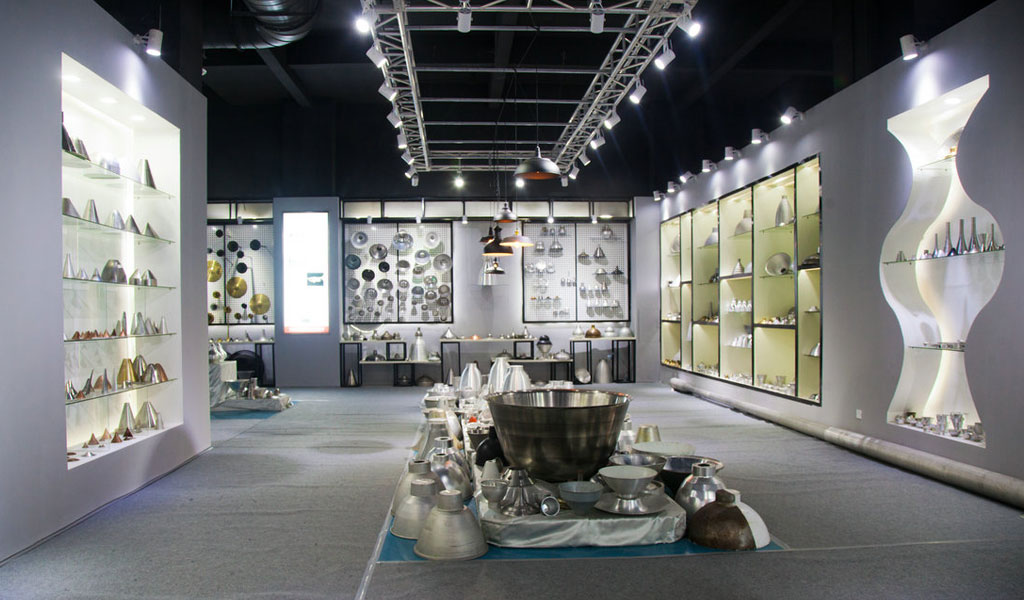
At BE-CU China Metal Spinning company, we make the most of our equipment while monitoring signs of excess wear and stress. In addition, we look into newer, modern equipment and invest in those that can support or increase our manufacturing capabilities. Our team is very mindful of our machines and tools, so we also routinely maintain them to ensure they don’t negatively impact your part’s quality and productivity.
Talk to us today about making a rapid prototype with our CNC metal spinning service. Get a direct quote by chatting with us here or request a free project review.
BE-CU China CNC Metal Spinning service include : CNC Metal Spinning,Metal Spinning Die,Laser Cutting, Tank Heads Spinning,Metal Hemispheres Spinning,Metal Cones Spinning,Metal Dish-Shaped Spinning,Metal Trumpet Spinning,Metal Venturi Spinning,Aluminum Spinning Products,Stainless Steel Spinning Products,Copper Spinning Products,Brass Spinning Products,Steel Spinning Product,Metal Spinnin LED Reflector,Metal Spinning Pressure Vessel,
